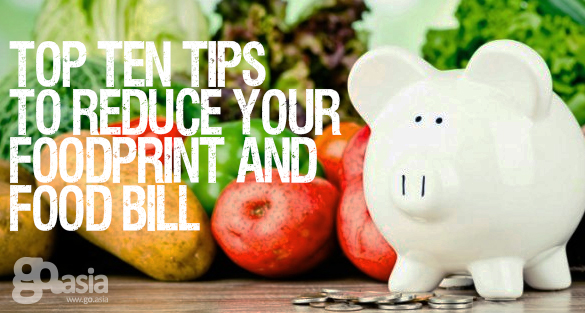
It goes without saying that for each and every one of us, eating is a crucial part of our daily lives. For some, the act of eating represents pure sustenance; for others, the art of eating is a ritual of culinary delights. But whatever your relationship to food, we can all be smarter — about the way we eat it, serve it, shop for it and dispose of it. We hope you will find all of the necessary tools and resources you need to reduce your “food print” here. So EAT up… but do it mindfully.
Follow these top ten tips to reduce your “foodprint” and food bill! (contributions by NRDC and WRAP UK)
(1) Shop Smart—plan meals, use shopping lists and avoid impulse buys. Don’t succumb to marketing tricks that lead you to buy more food than you need, particularly for perishable items. Though these may be less expensive per ounce, they can be more expensive overall if much of that food is discarded.
(2) Buy Funny Fruit—many fruits and vegetables are thrown out because their size, shape, or colors are not “right”. Buying these perfectly good funny fruit, at the farmer’s market or elsewhere, utilizes food that might otherwise go to waste.
(3) Understand Expiration Dates— in the US, “sell-by” and “use-by” dates are not federally regulated and do not indicate safety, except on certain baby foods. Rather, they are manufacturer suggestions for peak quality. Most foods can be safely consumed well after their use-by dates. In the UK, “best before” dates are also generally manufacturer suggestions for peak quality. Likewise, most foods can be safely consumed well after these dates. The important date is “use-by”: eat food by that date or check if you can freeze it.
(4) Zero Down Your Fridge—eat food that is already in your fridge before buying more or making something new, which will save time and money. Follow storage guidance to keep food at its best. Websites such as www.lovefoodhatewaste.com can help you get creative with recipes to use up anything that might go bad soon.
(5) Say Freeze and Use Your Freezer—frozen foods remain safe indefinitely. Freeze fresh produce and leftovers if you won’t have the chance to eat them before they go bad. You can also do this with take-away or delivered food, if you know you will not feel like eating it the next day.
(6) Request Smaller Portions—restaurants will often provide half-portions upon request at reduced prices.
(7) Compost—composting food scraps can reduce climate impact while also recycling nutrients.
(8) Use FIFO (First in First Out) as a kitchen rule. Check your pantry. Cook and eat first what you bought first. Store newly bought canned goods at the back of the cabinet. Keep older ones in front for easy access.
(9) Love Leftovers – tonight’s leftover chicken roast can be part of tomorrow’s sandwich. Diced older bread can become croutons. Be creative! Ask your restaurant to pack up your extras so you can eat them later. Freeze them if you don’t want to eat immediately. Very few of us take leftovers home from restaurants. Don’t be embarrassed to do so!
(10) Donate—non-perishable and unspoiled perishable food can be donated to local food banks, soup kitchens, pantries and shelters. Local and national programs frequently offer free pick-up and provide reusable containers to donors.
Source: Think Eat Save
Image: Beetnik
======================================
<< return to previous page
<< return to main page
<< about the project
<< about LOHAS experience
<< FAQ





